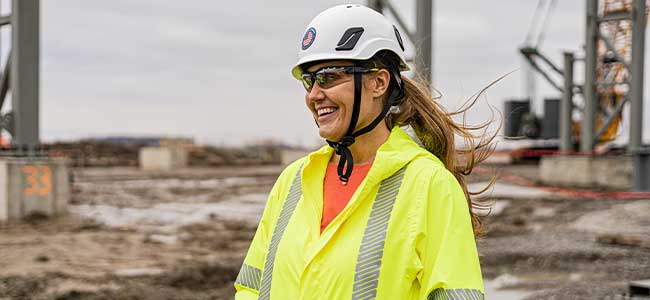
Getting the Right Fit
How women’s PPE creates a safe and inclusive job site.
- By Mary Padron
- Jun 01, 2023
Historically, PPE was designed and made for men, with little consideration for women in the workplace. At the time, this mindset was understandable because most women worked at home and not at industrial job sites. However, when men went off to war in World War II, all that changed.
According to the National World War II Museum in New Orleans, “American women played important roles during World War II, both at home and in uniform. Not only did they give their sons, husbands, fathers, and brothers to the war effort, they gave their time, energy, and some even gave their lives. … More than 6 million women took wartime jobs in factories, three million volunteered with the Red Cross, and over 350,000 served in the military.”
Rosie the Riveter
Do you remember Rosie the Riveter, the World War II media icon in the famous “We Can Do It” poster? The function of this poster was to recruit women for factory work to produce munitions and other war materials.
In the poster, Rosie is wearing a red and white polka-dot red bandanna tied with a bow at the top of her head and her workwear is oversized. Her attire reflected the mindset of PPE for women at that time.
More than half a century after that iconic poster appeared, a U.S. Occupational Safety and Health Administration (OSHA) advisory committee heard complaints about ill-fitting PPE and garments that were being provided to women in non-traditional jobs.
Their 1999 report determined that “poor-fitting protective equipment and clothing frequently did not function in the manner for which it was designed; accordingly, protection that the gear was supposed to deliver was compromised—leading to serious health and safety risks for women in those trades.”
Then in 2020, COVID-19 exponentially exposed gender inequities around the fit and design of PPE in the medical community.
“Although women make up 70% of the health workforce, medical PPE across all areas is designed with a default male body in mind,” according to the World Health Organization. “When a majority of health workers are women, if the PPE doesn’t fit women, it doesn’t fit health workers.”
And now, with more women entering construction, the trades, oil & gas, utilities and other industrial sectors, the importance of safeguarding female employees has gained momentum, especially in protective clothing and above-the-neck protection.
This article originally appeared in the June 1, 2023 issue of Occupational Health & Safety.